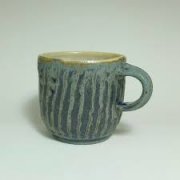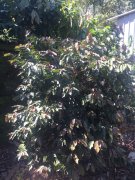Effect of Water quality on Coffee SCAA specifies the TDS value of water
Every time we take a cup test, why is the TDS value of water between 125and 175in accordance with SCAA?
It turns out that [water quality] has a great influence on the flavor of coffee!

For a long time, the details of handmade coffee have studied the effects of various brands of filter paper on coffee extraction. However, the water, which has an impact on coffee up to more than 98.5%, has not been explored.
This time we decided to explore the impact of "water quality" on coffee.
The influencing factors of water can be divided into three categories:
1. The pH of water (PH value)
2. Softness and hardness of water (calcium carbonate content)
3. Total amount of soluble matter in water

Ph value of water
The PH value refers to the strength values of acidity and alkalinity in aqueous solution. When water is at 25 ℃, a PH value of 7 means neutral, a PH value greater than 7 means stronger alkalinity, and a PH value less than 7 indicates stronger acidity. The stronger the alkalinity, the stronger the ability to counteract the acid; the stronger the acidity, the stronger the ability to be counteracted by alkalinity.
Soft and hard water (soft water VS hard water)
Water contains many kinds of minerals, such as calcium ion, magnesium ion, calcium carbonate. Its mineral content is mg/l, and water can be simply divided into two kinds: soft water and hard water.
Soft water: the content of calcium carbonate in water is lower than that of 100mg/l. Brewing in soft water can highlight the sour taste of coffee.
Hard water: water contains more calcium carbonate than 100mg/l. Hard water can highlight the bitterness of coffee.

When the content of calcium or magnesium ion in water is too high, it is easy to affect the release of caffeine and tannin; in addition, the bitterness of coffee is also difficult to dissolve in low hardness water, but the effect of coffee flavor also depends on individual taste. We can only say that water will have a certain impact on coffee flavor.
Total soluble solids in water (TDS Total Dissolved Solids)
Also known as total salinity. Refers to the total amount of dissolved components in water, including the total amount of various ions, molecules and compounds dissolved in water, excluding suspended solids and dissolved gases.
According to the research of American Fine Coffee Association (SCAA), the ppm value of water is between 125and 175. it is the most ideal to extract coffee, and it is easy to reach an ideal value of concentration and extraction rate.

The reason is that if the ppm value is less than 75, it is more likely to be over-extracted, while if the ppm value is higher than 225, it is more likely to be underextracted.
It turns out that SCAA stipulates the use of water, and the coffee made by TDS between 125 and 175 is really delicious.
Generally speaking, water with too high hardness tastes unpalatable and will cut the mouth a little bit, but it doesn't mean that soft water tastes better. Hard water containing trace minerals has the best taste when its hardness is between 125 and 175, like mountain spring water has enough minerals, so it will be sweeter when boiled, but it will not be so palatable if it exceeds 250.
Experimental method: SCAA cup test
Experimental water
1) Tap Water in Neihu District of Taipei (TDS_80)
2) Taishan pure water (TDS_20)
3) Wangwang Marine Deep Water (TDS_250)
4) unified alkaline ionized water (TDS_80)

Is the coffee good? is the quality of the coffee bad?
I really will!
Low value: can show the original flavor of coffee.
High u PH value: easy to produce high salty taste.
The mineral springs with higher content of u sodium ion have higher salty taste.
Mineral springs with high content of u lithium or potassium ions have a slightly bitter taste.
Soft water tastes softer and more round and soft to drink.
U the sweetness of hard water is higher and the level is more obvious.

PS)
Soft water: pure water filtered by RO, without any minerals.
Hard water: water containing trace minerals.
However, in general, Italian semi-automatic coffee in coffee shops use soft water, mainly because they are afraid that too much mineral content will be stored in the boiler and the boiler will be burnt out, so the use of soft water is more secure for expensive machines.
Important Notice :
前街咖啡 FrontStreet Coffee has moved to new addredd:
FrontStreet Coffee Address: 315,Donghua East Road,GuangZhou
Tel:020 38364473
- Prev

Skills of using coffee cups introduction to the usefulness and characteristics of various coffee cups
Did you drink coffee and use the right cup? The coffee on the market includes pottery, stainless steel, bone porcelain and so on. How to choose a cup of coffee? [pottery cup] the simplicity of the pottery cup and the roundness of the porcelain cup mark different attitudes towards coffee. Pottery cup: rich in texture, suitable for deep-baked coffee with rich taste. Because the pottery cup soil has delicate pores, it can eat a lot of miscellaneous flavor.
- Next

Introduction to the characteristics of Taiwan Purple Leaf Coffee Tree 'Men's Coffee' in Portugal
Purple Leaf Coffee (Purpurascens), non-self-pollinated coffee! Han Huaizong teacher Han Huaizong called this coffee "Men's Coffee" (Cafe Macho). The young leaves of the coffee are purple and the mature leaves are lilac. The flower is light red, the young fruit has purple stripes, the mature fruit is dark red, and the yield is low. Purple leaf coffee has masculinity, is a mutant sterile male flower, and can not be pollinated by itself.
Related
- Beginners will see the "Coffee pull flower" guide!
- What is the difference between ice blog purified milk and ordinary milk coffee?
- Why is the Philippines the largest producer of crops in Liberia?
- For coffee extraction, should the fine powder be retained?
- How does extracted espresso fill pressed powder? How much strength does it take to press the powder?
- How to make jasmine cold extract coffee? Is the jasmine + latte good?
- Will this little toy really make the coffee taste better? How does Lily Drip affect coffee extraction?
- Will the action of slapping the filter cup also affect coffee extraction?
- What's the difference between powder-to-water ratio and powder-to-liquid ratio?
- What is the Ethiopian local species? What does it have to do with Heirloom native species?

